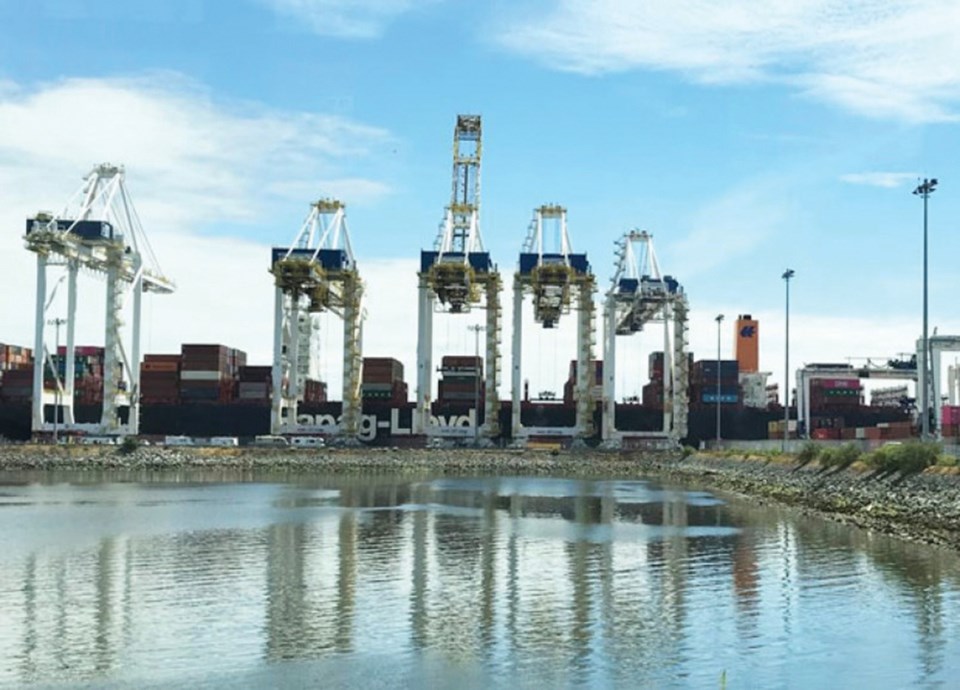Fast-growing Prince Rupert beats Roberts Bank Terminal 2
The federal approval of Roberts Bank Terminal 2 (RBT2) uselessly threatens the Fraser Estuary. But BC’s cabinet can veto RBT2. Their action would champion the environment and the economy, especially of Prince Rupert and Northern BC.
Mainly, RBT2 would be an island of fill dumped on Roberts Bank, Delta. The Vancouver Fraser Port Authority (VFPA) covets it to lease it out for Deltaport container-handling capacity.
Since 2003, Environment Canada scientists have analyzed RBT2 effects. They say RBT2 would degrade an extensive area of biofilm, rich in nutrients, northwest of the Deltaport causeway. They state that poses “an unmitigable species-level risk to Western Sandpipers.”
Flocks of those tiny shorebirds stop at Roberts Bank as they migrate between Latin America and Alaska on the Pacific Flyway. In this context, they are a representative species.
The Precautionary Principle of the Environmental Protection Act applies. Environment Canada therefore states that VFPA must redesign DP4. Instead, VFPA devises ways to skirt redesign.
Meanwhile, science has revealed further values of the energizing nutrients in the biofilm. SFU’s Patricia Baird, PhD, told the RBT2 assessment how the fatty acids in the biofilm are “for the entire food web,” beyond being vital for shorebirds.
For instance, the fatty acid DHA, which humans synthesize via seafood, helps the brain develop at fetal and infant stages. Global warming will lead to steep declines in available DHA. RBT2 would make that worse.
The federal approval includes “legally binding conditions.” At least for the aspects of biofilm and Western Sandpipers, they are fluff. The Environment Canada directive to redesign RBT2—decisive, enforceable—is gone.
But Global Container Terminals (GCT), who operate the Deltaport terminal, heed the Environment Canada science. They redesigned RBT2 as “Deltaport Berth Four,” DP4. It’s progressing in the federal assessment process.
DP4 would add Berth 4 to Berths 1 to 3, all on the side of the Deltaport causeway with not much biofilm. That’s crucial, although DP4 has ecological flaws too. For instance, it does displace some biofilm to widen the causeway.
In bulk and in cost, DP4 is only half as big as Roberts Bank Terminal 2. Yet DP4’s added capacity exceeds RBT2’s if the Deltaport operators, GCT, get credit for what they’ve added there recently.
The DP4 site is already disturbed, but RBT2 disturbs a fresh site.
By design, DP4 will phase in as needs arise, unlike RBT2. And already there’s spare Lower Mainland capacity for many years, thanks to expansion at Burrard Inlet and—by GCT—at Deltaport.
Most Pacific Gateway container business is able to choose either VFPA or Prince Rupert Port Authority (PRPA) terminals. “Rupert” has been the growing choice since 2008. Rupert’s container capacity is catching up to Deltaport’s.
Compared to Vancouver, Rupert is far closer to Asia, and it has reliable rail to much of North America. Its shipping lanes are wide. Its natural harbour is deep, ready to use. The Prince Rupert Port Authority (PRPA) is collegial.
Canada may never need a new container terminal at Deltaport. However, along with Rupert expansion, it’s wise to have DP4 ready to ward off RBT2.
RBT2 squanders the environment and billions of dollars of all Canadians, since VFPA is a crown asset.
Now BC’s cabinet has its say on RBT2—after the federal condoning of RBT2 environmental damage. Is RBT2 a necessary evil because it alone can cope
with Pacific Gateway growth in container business?
No! It’s clear that other container terminals in the Pacific Gateway have the foresight to meet the demand. BC’s cabinet can safely end the RBT2 insanity.
The BC Environmental Assessment Office welcomes comments until June 8th.
Co-authors Sharon MacGougan and Jim Wright are president and past president of the Garden City Conservation Society.



